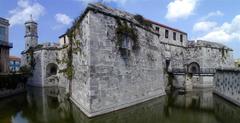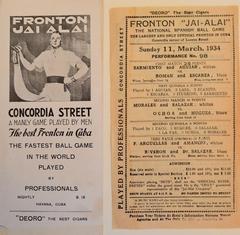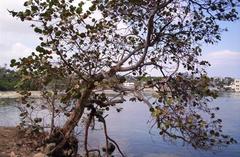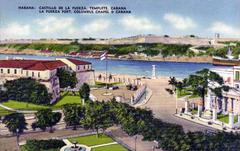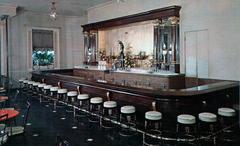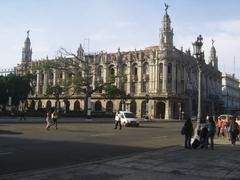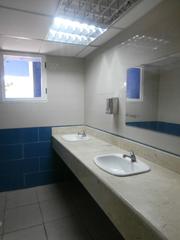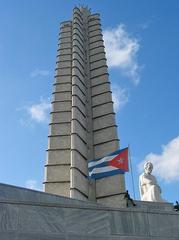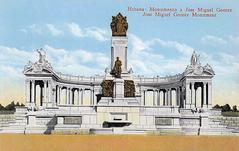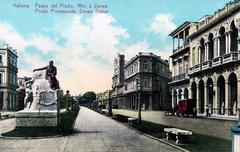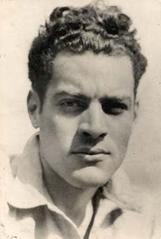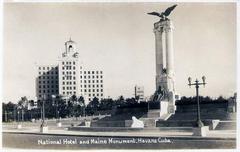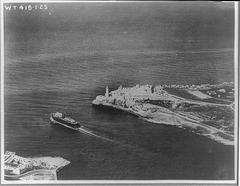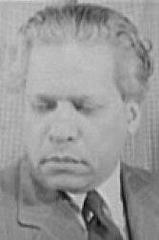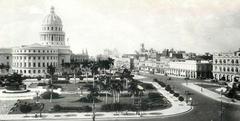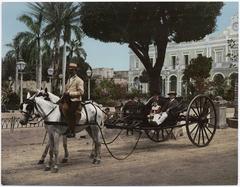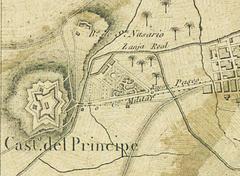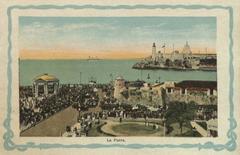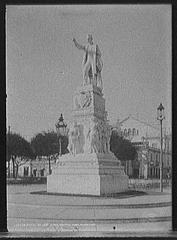
Teatro Martí: Visiting Hours, Tickets, and Travel Guide to Havana’s Historic Gem
Date: 04/07/2025
Introduction: Teatro Martí’s History and Cultural Significance
Teatro Martí, nestled in the vibrant heart of Old Havana, stands as a testament to Cuba’s rich cultural heritage and historical legacy. Originally inaugurated in 1884 as Teatro Irijoa, this neoclassical landmark has played a pivotal role in Cuban history and the evolution of its performing arts. Renamed in 1900 to honor José Martí—Cuba’s revered national hero—the theater reflects both artistic innovation and the spirit of national identity (Umbrella Travel; Magazine AM:PM).
Distinguished by its “hundred doors” design and harmonious neoclassical façade, Teatro Martí’s architecture is both beautiful and ingeniously adapted to Havana’s tropical climate (TodoCuba; CubaPLUS Magazine). Its intimate horseshoe-shaped auditorium has hosted legendary performances, significant political events, and the drafting of Cuba’s first constitution in 1901.
After decades of closure due to structural decay, a meticulous restoration was completed in 2014, restoring Teatro Martí’s status as a premier hub for Cuban performing arts, from zarzuelas and buffo theater to contemporary productions (OnCuba News; EcuRed). Open Tuesday through Sunday, the theater offers guided tours and a rich program of events, welcoming visitors to experience Havana’s cultural heartbeat.
Strategically located near landmarks like El Capitolio, Gran Teatro de La Habana, and the Museum of the Revolution, Teatro Martí is a gateway to understanding Havana’s UNESCO-listed Old Havana district (Gran Teatro de La Habana; Google Maps).
Table of Contents
- Origins and Early Years (1884–1900)
- Transition to National Symbolism (1900–1959)
- Challenges, Closure, and Restoration (1959–2014)
- Rebirth and Contemporary Significance (2014–Present)
- Visiting Hours, Tickets, and Accessibility
- Architectural Highlights
- Visitor Experience and Travel Tips
- Nearby Attractions and Historical Sites
- Frequently Asked Questions (FAQ)
- Conclusion and Call to Action
- References
Origins and Early Years (1884–1900)
Teatro Martí, inaugurated as Teatro Irijoa in 1884, was established during a period of dynamic growth in Havana’s cultural and urban landscape. Its founder, Ricardo Irijoa, envisioned a cosmopolitan space reflecting European influences, and the theater quickly became a focal point for the city’s performing arts (Umbrella Travel).
The building’s innovative design—featuring numerous lateral openings for natural ventilation—earned it the affectionate nickname “the coliseum of a hundred doors.” Its interiors, adorned with chandeliers, plush carpets, and elegant marble floors, established an atmosphere of refined grandeur.
Transition to National Symbolism (1900–1959)
In 1900, the theater was renamed Teatro Martí in honor of José Martí, symbolizing Cuba’s burgeoning sense of national identity after achieving independence from Spain (Magazine AM:PM). Teatro Martí’s stage became a crucible for Cuban artistic and political life, notably hosting the 1901 Constituent Assembly that drafted the nation’s first constitution.
Throughout the early 20th century, Teatro Martí was a nucleus for Havana nightlife and a showcase for luminaries like Rita Montaner. The theater became renowned for its premieres of iconic Cuban zarzuelas and the emergence of buffo theater’s beloved characters.
Challenges, Closure, and Restoration (1959–2014)
Following the Cuban Revolution, Teatro Martí was nationalized and continued operations before closing in 1965 for repairs. By 1974, prolonged neglect and structural degradation forced its closure for nearly 40 years (Magazine AM:PM).
In the early 2000s, Havana’s historian Eusebio Leal spearheaded an ambitious restoration project, preserving the theater’s original neoclassical elements while modernizing it for safety and comfort (Umbrella Travel).
Rebirth and Contemporary Significance (2014–Present)
Teatro Martí triumphantly reopened in 2014, regaining its position as a cultural landmark. The restoration revitalized its interiors, from the signature chandelier to the elegant galleries, and enhanced its accessibility and technical capabilities. Today, Teatro Martí hosts prestigious events, music festivals, and theatrical productions, drawing both locals and international visitors (Umbrella Travel).
Visiting Hours, Tickets, and Accessibility
- Hours: Tuesday–Sunday, 10:00 AM–6:00 PM. Evening performances generally begin at 8:00 PM.
- Tickets: General admission ranges from 10–30 CUP for Cubans and 10–30 USD for international visitors. Tickets are available at the box office or online (La Papeleta).
- Guided Tours: Available in English and Spanish, tours can be booked in advance.
- Accessibility: Fully accessible with ramps, elevators, and reserved seating. Assistance is available upon request.
- Photography: Permitted in public areas but restricted during performances.
Architectural Highlights
Neoclassical Design and Exterior Features
Teatro Martí’s façade is a masterwork of 19th-century neoclassicism, distinguished by its rectangular block, continuous cornice, and parapet once crowned with decorative urns (TodoCuba; NovelaCuba). The symmetrical arrangement of windows—each with semicircular pediments—harmonizes horizontal and vertical lines, giving the building a stately presence (CubaPLUS Magazine).
The main entrance is adorned with a prominent pediment and a distinctive semicircular window, set above the grand doors. The double-pitched roof and restrained ornamentation typify the neoclassical style.
Interior Layout and Decorative Elements
The horseshoe-shaped auditorium, originally designed to seat between 720 and 1,200 spectators, optimizes both acoustics and sightlines (Wikipedia). Marble floors, vintage clocks, lush curtains, and iron columns define the elegant interior.
The “coliseum of the hundred doors” refers not only to the building’s numerous entryways, which ease movement and ventilation, but also to its inviting openness (OnCuba News).
Restoration and Modern Enhancements
The 2014 restoration, led by the Office of the Historian of Havana, preserved as many original features as possible while integrating modern amenities. Key improvements included structural reinforcement, restoration of decorative elements, new stage technology, modern dressing rooms, and improved accessibility (OnCuba News; NovelaCuba). The renovation won the Premio Nacional de Restauración in 2015 (Wikipedia).
Unique Features and Social Legacy
At its 1884 inauguration, Teatro Martí was among the first Havana theaters to admit people of color both as workers and audience members—a progressive legacy echoed in its open, inclusive design (CubaPLUS Magazine). The integration of public and private spaces, and the restoration of gardens and a café, further enhance the visitor experience (TodoCuba).
Visitor Experience and Travel Tips
- Arrival: Located at 463 Calle Dragones, between Zulueta and Prado, the theater is easily reached by taxi, public transport, or on foot (Google Maps).
- Accessibility: Ramps and elevators are available; staff provide assistance for international visitors.
- Amenities: Café Martí serves refreshments; restrooms and Wi-Fi are available.
- Dress code: Smart casual; formal attire recommended for gala events.
- Language: Most performances are in Spanish; some include English subtitles or summaries.
Nearby Attractions and Historical Sites
- Parque Central and Gran Teatro de La Habana: Five-minute walk; offers guided tours and ballet performances (Gran Teatro).
- Museo Nacional de Bellas Artes: Two blocks away; Cuba’s leading art collection (Museo Nacional de Bellas Artes).
- El Capitolio: Ten-minute walk; guided tours of this iconic building (El Capitolio).
- Paseo del Prado: Elegant boulevard for strolling and photography (Cuba Travel).
- Barrio Chino: Vibrant Chinatown with restaurants and street art (BBC Travel).
- Dining: Options include La Floridita (La Floridita), Los Nardos, and El Café Arcangel.
- Accommodation: Iberostar Parque Central (Iberostar) and boutique casas particulares.
Frequently Asked Questions (FAQ)
Q: What are Teatro Martí’s opening hours?
A: Tuesday–Sunday, 10:00 AM–6:00 PM; performances usually begin at 8:00 PM.
Q: How do I purchase tickets?
A: At the box office or online via La Papeleta.
Q: Is the theater wheelchair accessible?
A: Yes, with ramps, elevators, and accessible restrooms.
Q: Are guided tours available?
A: Yes, in Spanish and English, at scheduled times.
Q: Can I take photos inside?
A: Photography is allowed in the lobby but not during performances.
Conclusion and Call to Action
Teatro Martí is a living monument to Havana’s cultural resilience and artistic innovation. Whether you’re drawn by its architectural grandeur, rich history, or outstanding performances, a visit promises insight into Cuba’s national identity and creative spirit. Make Teatro Martí a highlight of your Havana itinerary for an unforgettable encounter with the city’s past and present.
For real-time event updates, ticket purchases, and exclusive behind-the-scenes content, download the Audiala app. Explore our related posts on Havana’s historic sites and follow Teatro Martí on social media for the latest cultural news.


